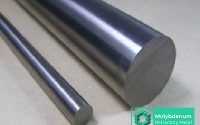Unveiling the Wonders of Molybdenum Disilicide: Properties and Applications
Molybdenum disilicide, often referred to as MoSi2, is a remarkable compound that has captivated the attention of scientists and engineers across various industries. Its unique properties make it a valuable material with a range of applications that span from aerospace to electronics. In this article, we will delve into the properties and explore the diverse applications of molybdenum disilicide.
Properties of Molybdenum Disilicide
- High-Temperature Stability: One of the most notable characteristics of molybdenum disilicide is its exceptional stability at high temperatures. This property makes it an ideal choice for applications that involve extreme heat, such as in industrial furnaces, heating elements, and aerospace components.
- Oxidation Resistance: Molybdenum disilicide forms a protective oxide layer at high temperatures, which prevents further oxidation and degradation. This unique feature enhances its durability and reliability in challenging environments.
- Electrical Conductivity: MoSi2 exhibits good electrical conductivity at elevated temperatures, making it suitable for use in electrical heating elements and other applications that require reliable conductivity in high-temperature settings.
- Thermoelectric Properties: Molybdenum disilicide has attracted attention in the field of thermoelectric materials due to its ability to convert heat into electricity. This property is harnessed in energy harvesting and waste heat recovery systems.

Applications of Molybdenum Disilicide
- Heating Elements: Molybdenum disilicide heating elements are revolutionizing industries that require high-temperature processes. These elements are employed in heat treatment furnaces, sintering processes, and material testing, offering exceptional thermal stability and efficiency.
- Aerospace Components: The aerospace industry benefits from molybdenum disilicide’s high-temperature resistance. It is used in the construction of aircraft and spacecraft components that must withstand extreme thermal conditions during flight and re-entry.
- Thermoelectric Devices: Molybdenum disilicide’s thermoelectric properties have led to its use in thermoelectric generators and coolers. It plays a crucial role in converting waste heat into usable electricity and providing efficient cooling solutions.
- Semiconductor Manufacturing: MoSi2’s electrical conductivity and stability make it valuable in semiconductor manufacturing processes, such as chemical vapor deposition (CVD) and physical vapor deposition (PVD), where consistent temperature control is essential.
- Additive Manufacturing: With the rise of additive manufacturing techniques, molybdenum disilicide is finding its way into 3D printing applications. Its unique properties allow for the creation of complex and customized components for various industries.
- Solar Energy: In the realm of renewable energy, molybdenum disilicide’s high-temperature stability makes it suitable for concentrated solar power (CSP) systems, where it can be used to collect and store thermal energy.
Conclusion
In conclusion, molybdenum disilicide’s exceptional properties have opened up a world of possibilities across numerous industries. Its ability to withstand high temperatures, resist oxidation, conduct electricity, and contribute to energy conversion and efficiency has solidified its role as a transformative material. As technology continues to advance, molybdenum disilicide’s applications are poised to expand even further, shaping the future of various fields.
For more information about molybdenum disilicide or other molybdenum materials, please visit https://www.samaterials.com/6-molybdenum.html.



